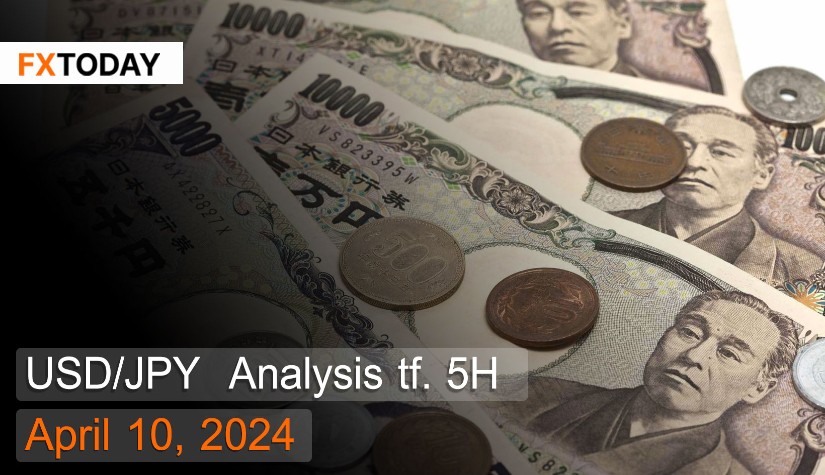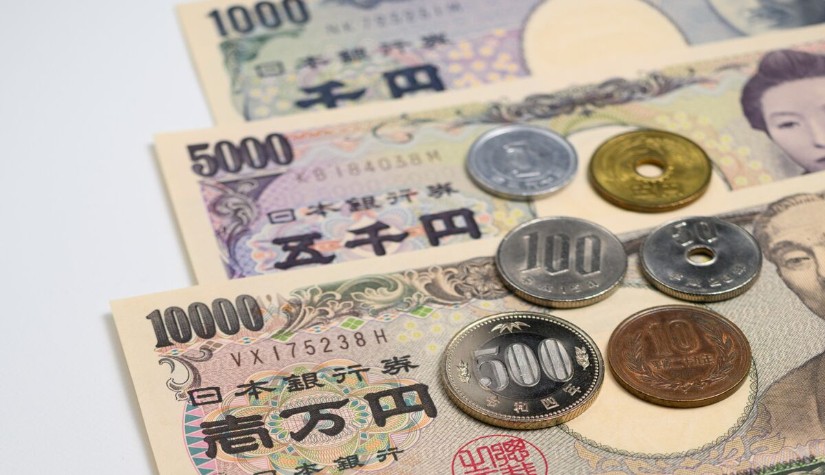The increased inflation of the United States has put pressure on other currencies.
The Japanese yen has weakened to over 152.4 yen per US dollar after the announcement of higher-than-expected inflation rates in the United States. This has led investors to have more confidence that the Federal Reserve will have to maintain interest rates higher for longer to curb inflation. Meanwhile, the Bank of Japan's interest rates remain at approximately 0% to 0.1%, and the depreciation of the yen may stimulate more intervention from Japan in the currency markets.
Japan's unemployment rate stood at 2.6% in February, with an increase of 120,000 unemployed individuals, totaling 1.82 million people, and an increase of 220,000 employed individuals, totaling 67.83 million people. The job-to-applicant ratio decreased to 1.26, the lowest in two years, indicating overall economic pressure and future trends from salary increases and the cancellation of negative monetary policies.
The confidence index among major manufacturers decreased to 11 in the first quarter of 2024, marking the first decline in a year due to severe impacts from recent closures of automobile factories. However, large manufacturing companies still see the current economic situation as potentially slowing down further due to increased inflation.
Japan's Manufacturing Purchasing Managers' Index (PMI) was at 48.2 in March, marking the tenth consecutive month of factory activity slowdown, though it decreased the least since November of the previous year. New orders continued to decline, albeit at the slowest rate in five months. Concurrently, job creation increased for the first time in three months, indicating a resurgence in labor demand. However, transportation issues persist due to disruptions in the Red Sea and the Panama Canal.
Japan's Leading Economic Index, which measures economic trends for the next 2-3 months based on job postings and consumer confidence, increased to 111.8 in February from 109.5 the previous month, reflecting increased consumer confidence despite the sharpest decline in factory activity in four months.
Household spending in Japan continued to decline by 0.5% on a monthly basis in February, a significant slowdown from the 6.3% decrease in the previous month, marking the largest contraction in two years. Spending on transportation and furniture saw significant reductions, while spending on food, housing, and clothing increased, indicating increased demand amid lingering economic vulnerabilities.
Techical analysis data (5H)
Resistance: 152.66, 152.95, 153.39
Source: Investing.com
Buy/Long 1: If the price touches support in the price range of 151.49 - 151.93 but cannot break the support at 151.93, you may set a TP at approximately 152.95 and SL at around 151.2 or according to your acceptable risk.
Buy/Long 2: If the price breaks the resistance in the price range of 152.66 - 152.95, you may set a TP at approximately 153.39 and SL at around 151.49 or according to your acceptable risk.
Sell/Short 1: If the price touches resistance in the price range of 152.66 - 152.95 but cannot break the resistance at 152.66, you may set a TP at approximately 151.49 and SL at around 153.39 or according to your acceptable risk.
Sell/Short 2: If the price breaks the support in the price range of 151.49 - 151.93, you may set a TP at approximately 151.2 and SL at around 152.95 or according to your acceptable risk.
Pivot point April 10, 2024 08:18 PM. GMT+7
|
Name
|
S3
|
S2
|
S1
|
Pivot Points
|
R1
|
R2
|
R3
|
| Classic | 151.2 | 151.49 | 151.93 | 152.22 | 152.66 | 152.95 | 153.39 |
| Fibonacci | 151.49 | 151.77 | 151.94 | 152.22 | 152.5 | 152.67 | 152.95 |
| Camarilla | 152.18 | 152.25 | 152.31 | 152.22 | 152.45 | 152.51 | 152.58 |
| Woodie's | 151.28 | 151.53 | 152.01 | 152.26 | 152.74 | 152.99 | 153.47 |
| DeMark's | - | - | 152.08 | 152.29 | 152.81 | - | - |
















